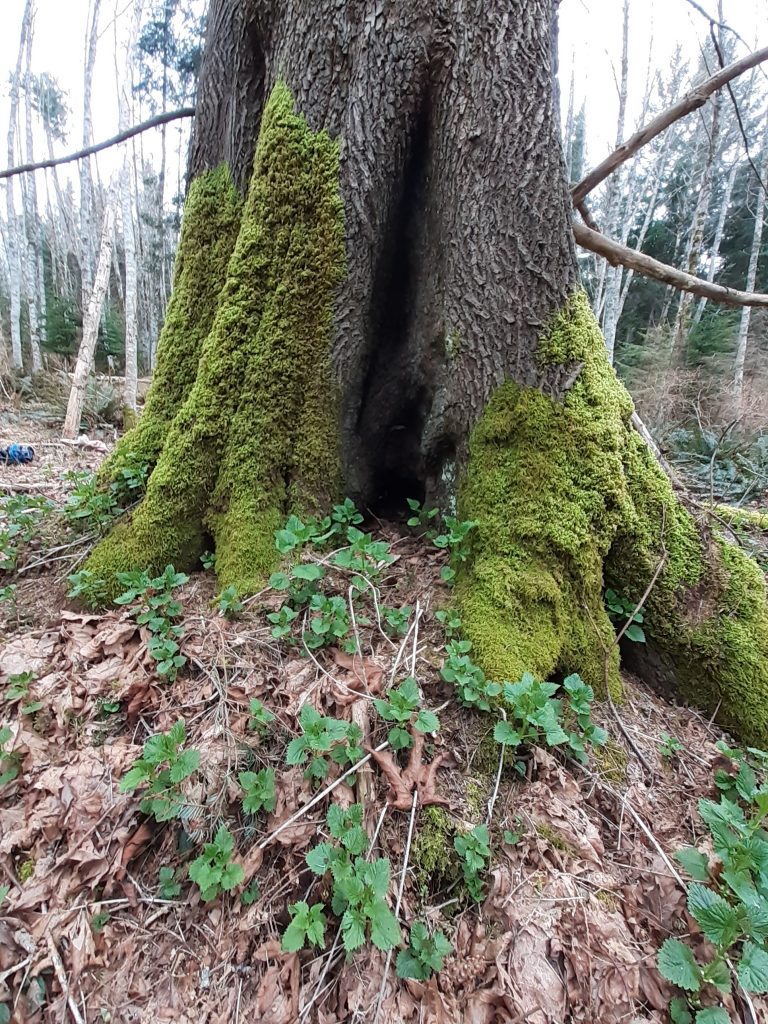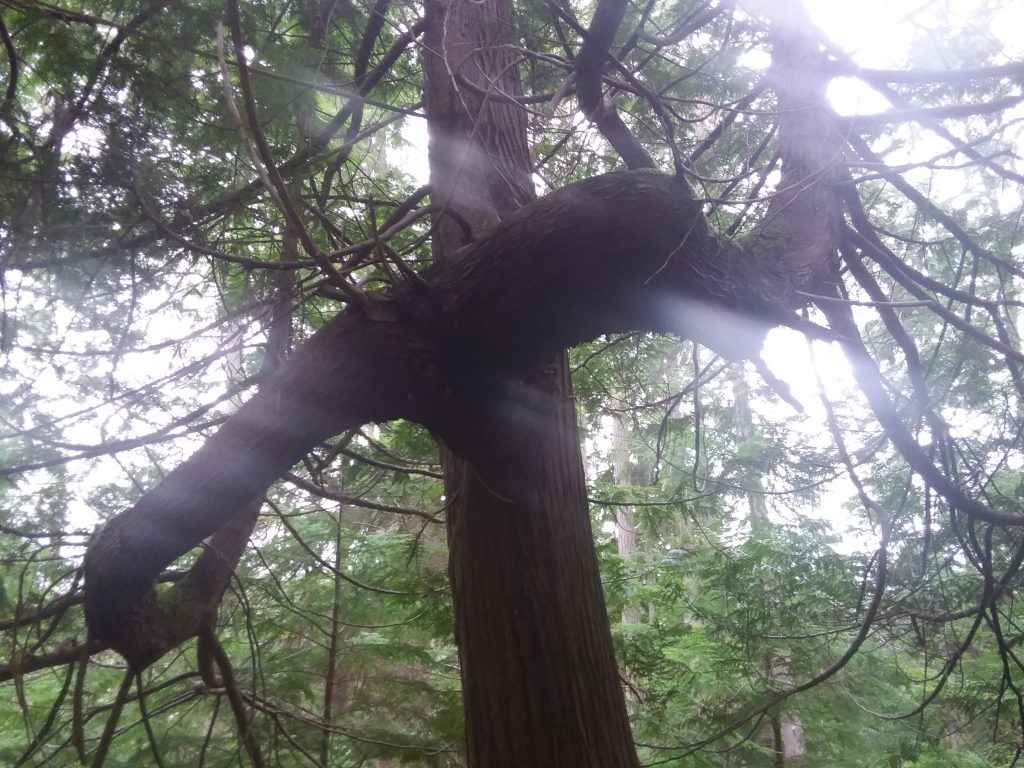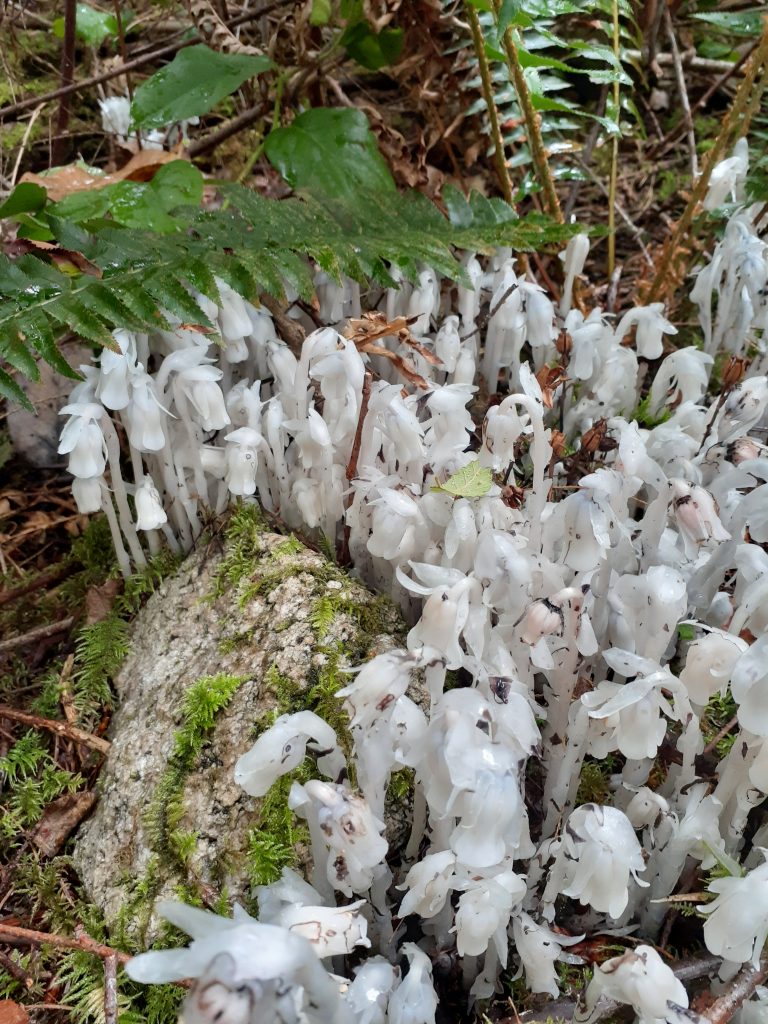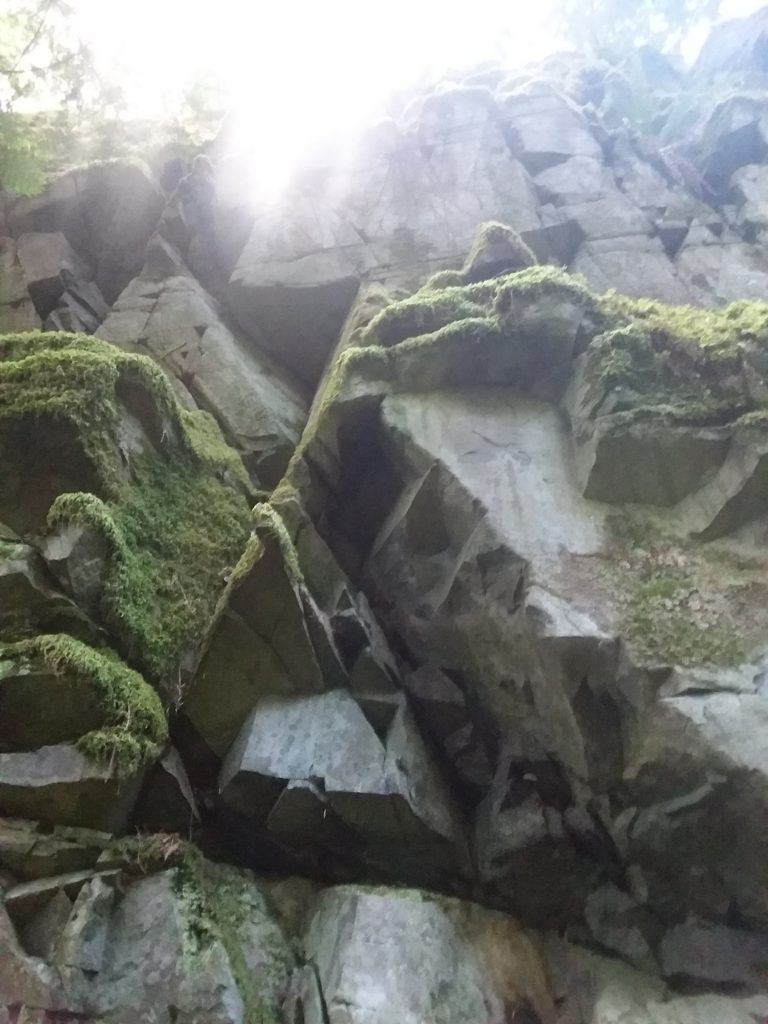By Hazel Appaqaq | 16 minute read
“[…]if that which you seek you find not within you, you will never find it without. For behold, I have been with you since the beginning, and I am that which is attained at the end of desire.”
The Charge of the Goddess Doreen Valiente
“Are you a spinner?” asked the lady in the driver’s seat. She had picked me up as I was thumbing a ride to the Hollyhock kirtan, one distant Sunday ago, back when both kirtan and hitch-hiking were still things. Although I had a foggy notion of what she meant, I felt the creeping suspicion of being spoken to indirectly by a larger being than the one sitting next to me. Spinning planetary bodies had been haunting the corridors of my grey matter. Whirling movements that tend to possess me on a dance floor also came to mind, and I heard myself reply in the affirmative.
Of course, it was to the art of yarn making that she was referring, an old past time preserved by a surprising number of dexterous hands in these parts. Could it be due to a closeness to the natural world that practitioners of old crafts remain tucked away in this green oasis, secluded from the urban jungle? Here, basket weaving, foraging, pottery, herbalism, dying with natural materials, fermenting, hide tanning and even taxidermy, all somehow manage to avoid joining the ranks of the forgotten in our technologically pervaded lives. Like old Gods being kept alive, these skills inspired by nature’s own creativity put many of us in touch with our potential as crafter, producer, wise woman and adept. Nine years ago, as a wandering wwoofer in my tweens, my trail meandered up Bluejay’s considerable driveway. The following spring revealed my task: overseeing the growing cycle of the gardens. Assisted by my fellow wwoofers, and drawing from Henry’s years spent in reciprocal relationship to the fields, I found myself exploring a living blueprint of an alternative existence, one lived close to the land. Eventually, the farmed and forested acres became the setting on which the island, in its many elusive charms, would come to hold my heart in its clutches.
I first set foot on the farm in the hushed witching hours of the night of October 30. Arriving at a new place in the dark is always an otherworldly experience. This time was especially so, the evergreen sentinels murmuring at the passage of the unknown interloper in their eerily vocal creaks and groans. Henry was off island that night, so the other wwoofers welcomed me into the fold, their witty banter with each other putting me at ease as we took a late supper in the farmhouse. My first sleep was in a caravan (built by a 14-year old Elijah) outfitted with its own wood stove, and no power. Without artificial light, or the nigh imperceptible presence of an electric field, the darkness and silence were like a heavy cloak that wrapped me completely, and pulled me into a sleep fit for the grave. When I would rejoin the world of the living, it would be my favourite day of the year…
My spirits hovered, as if by a tether that had been let out: it was Halloween, and I was being shown around the grounds and nearby trails, listening as my friendly guide hashed out the basics of the farm. All around us, the forest was in its early stage of diminishment, the sap in a leisurely descent toward its resting place beneath the spongy floor. Dazed at the amount of beauty crowded into one place, and nervously awaiting introductions with Henry, my whole being registered the crack of a gunshot sounding from the farm. We made a hasty hike back to find the scene of action in front of a cornfield: a slight man with a head of wild, white hair and beard was hovering over a recently deceased buck, rifle in hand, energetically giving directions to the other wwoofers who had also come running. He explained that for a while he’d been meaning to shore up their venison supply, and the buck, which had been circumventing the electric fence, was the luckless candidate. The tasks of the processing operation doled out, my anxiety to make a good impression with the farm’s engineer came to the fore. But a sense of reassurance took its place as he greeted me with sincere warmth, and a handshake reddened with blood.
A year and a half spent in the microcosm at the island’s geographic center yielded a bounty of cherished memories and personal testing, from the joys and challenges of community life. In fact, while still at a previous wwoof host on another gulf island, I’d written an extensive experiential wish list, as much for a greater being to take note of as for my own benefit. Two winters later, that list resurfaced, and rereading it was shiver-inducing. Every item I’d jotted down had come to pass through my escapades in the goblet-like containers of Green Valley. Looking back with an eye for my latest subject of fascination, my younger self’s foray into the field of island homesteading was well-timed, in her questing towards self-definition and actualization.
Late Summer, defined in Chinese Medicine, is the time of the harvest, as stridently depicted by the reaping of the buck. The pursuits of the previous seasons have arrived at a point of fruition, be it of physical or financial achievements, relationships forged, memories made, or increments of progress won in the slow and steady creation of health. It is the season associated with Earth, the element that governs our relation to nourishment, as well as our ability to maintain an inner equilibrium. The act of centering oneself is a strength embodied by the Spleen, which when cultivated, provides the capacity to follow through with a project and see it through to completion. Thus, Late Summer could be characterized as the purveyor of ripeness, suggesting the karmic results of one’s efforts. In it is mirrored the fulfillment of desire, when all that has been wrought by the busyness and endeavoring of the Spring and Summer enjoys a golden moment of glory. We feel an inclination to pause, and look back on what we’ve accomplished thus far in the year, and in our lives on the whole. Consequently, along comes a hiatus in the seasonal flow when time itself can seem to hang suspended. One might feel subtly less burdened by the habitual strain or slog of the daily routine, as our motions can become pleasantly effortless, dreamlike. This transition grants the opportunity to glimpse an exit from the patterns of our normal ebb and flow, the waxing and waning of our fetter and disposition. Our focus can turn instead to our energy’s sources – our intentions, passions, relationships, and those unique gifts that seek to flow from the inner realms to the outer world – or in a word, our purpose.
The earth births us, feeds us and eventually entombs us. Elemental Earth signifies both where we come from and that which empowers us to uncover and realize our inborn riches. As visible in a young wwoofer’s adventure of being drawn into the Bluejay bubble, connecting to place is an underrated path to knowing oneself. Enter the concept of individual constitution. Instead of trying to be other than what we are – to silence, conquer and quell all the conditions and annoying feelings that come with the territory of a corporeal existence, TCM prompts us to take careful note of the qualities of our bodies and personalities, our habitual mental and emotional states, and identify patterns in our personal histories and cultural underpinnings. Included in the study are such details as body shape and smell, the sound of the voice, coloration of the face and skin, texture of the flesh, the typical response to key emotions, and the thematic struggles which colour our relationships, work, and our posture towards the universe. These observations form the basis of a whole-being assessment, whereby we can locate ourselves in the domain of the element and organ function which we most resemble, and gain insight into how best to align with a harmonious embodiment of those phases. This means that, if two people are presenting similar ailments, their constitutions could well determine that they’d require different remedial strategies. The constitutional type maps out the labyrinthine language of the bodymind, and draws a customized path of self-care. Diagnosis and healing proceed not from disease, but from the individual.
Someone who typifies Earthly qualities is nurturing, supportive and has about them a natural tranquility. The Earth character enjoys being involved – socially and with food, and is usually the one doing the cooking. They often appear as the calm center at the eye of the storm, maintaining order in a hub of connection and nourishment. Physically, they tend to have a sturdy build, large, round muscles, and smooth, peachy skin. Earth types typically struggle with Spleen imbalances, and conditions of excess dampness. Good Spleen function keeps our skin firm, and holds our organs in place; therefore, flesh that is very soft and spongy to the touch, sagging skin, and prolapse of any organ are signs of an overburdened Spleen. Since the Spleen is also said to “control” Blood, or keep the Blood in the vessels, irregular movement of the Blood may result in easy bruising, slow wound healing, and varicose veins. Like humusy soil that has become saturated with moisture, accumulations of fluids in the tissues reflect the Spleen’s lagging ability to process the food coming in, or to reign in the appetite. Someone of this archetype is more susceptible than others to becoming overweight, and is often one to complain of bloating and a slow metabolism. If their diet contains too many dampening factors, their lips can become cracked and pale, and their muscles lose their tone. They might feel swollen or heavy, and feel like they have bags of water strapped to their legs. They may notice lumps and masses in the body, another form of damp accumulation. The acquired emotion associated with this element is worry or anxiety. Just as anger injures the Liver type, worry injures the Spleen and perpetuates problems involving digestion. Any circuitous thinking or obsession creates ripe conditions for issues such as ulcers, irritable bowel syndrome and colitis. One of the best things any of us can do to improve digestion is to stop worrying. Furthermore, imbalance of an Earth element type is often associated with feeling stuck and frustrated in life. They can feel like their identity is amorphous, or inseparable from a job, relationship, or living situation. Similar to the way their body loses tone and shape, they are susceptible by constitutional character to loss of a sense of self in any of these areas. Sympathy could be identified as the Earth character’s fatal flaw.
Earth is special among the transformations, because it consists of a unifying ground from which the other elements arise, perform their functions, and recede back to. As well as presiding over the period of roughly late August to the first frost, Earth oversees the interchange between all the seasons, and as such, is said to be the fulcrum around which the others are organized. This nature of containing and integrating the rest is palpable in the way that the garden and forest enjoy a second Spring of nettles and leafy greens. The days become bookended by the chill of the Fall. A gentler version of Summer heat lingers, while the first whisperings of Winter can be felt. A sensitive person would be well justified in feeling the odd urge to wear both sandals and a sweater.

The qualities of absorbing and sharing belong fundamentally to the Earth. Think of the soil’s ability to absorb heat, rain and nutrients, and hold them in a substrate that renders them accessible to all life. With this in mind, understand that the Spleen’s function has almost nothing to do with the physical organ by the same name. Instead, its primary meaning relates to digestion. It is by the effectiveness with which the digestive system reduces and absorbs our food, water, and air, that we enjoy a robust physique and ample energy throughout the day. The Spleen’s partner is the Stomach, and together, they are like our food system collecting and redistributing all of our consumables to and from the four corners of the Earth. Including the circulation of water and breath, this is arguably the most important function of them all, since it is from whence we derive all our strength and ability to regenerate. If the digestive process is hindered in any way, it doesn’t matter how many quality products we devour, the bodymind will essentially experience starvation and dissatisfaction. At any time of year, but particularly in Spleen season, it is imperative to correct and tweak any corruption of this system’s ingenious design. Furthermore, as mentioned above, the ability to manifest one’s desires is identified as a trait of the Spleen. The power to realise a harvest of one’s ambitions comes from Spleen vitality. By the power of Spleen energy, we write books, construct houses, and build cities. Putting oneself through schooling requires its driving force, as would creating a business plan, sewing a garment from scratch, or baking a cake. The mental clarity and perseverance required in committing information to memory and synthesizing interpretations draw from its potency. Someone with a balanced Spleen is practical, responsible, organized, and hard-working. Good Spleen chi can be felt as strength in the arms and legs, and good endurance. The vigor required to push down on the pedals of a bicycle, build a garden, run up a hill, and practice a martial art flow from its reserves. This builder and enactor is intimately bound to the Blood, even more so than the Liver. Where the Liver stores the Blood, and the Heart propels it, the Spleen is its generator and controller. Thus, the other viscera source their nectar of life from it. The importance of supporting its harmonious functioning at any time of year cannot be understated.
The Chinese are well known for their use of descriptive imagery, and when it comes to digestion, the metaphor of the bubbling cauldron serves well. In last season’s article, we touched on how elemental Fire is associated with one’s “digestive burn.” The heat of the flame reflects the voracity or torpor of the metabolism. The Spleen’s role in digestion is likened to a cauldron that contains the mixture of our food, water and air. Its function is evidenced by the efficacy with which the soupy mix is ripened and fermented in the gut and converted into energy, movement, mental acuity, and the drive to finish projects. It’s been well proven that a diet heavy in rich, fried, salty or spicy foods is often the culprit of symptoms of indigestion (also known as Spleen imbalance), but what’s less known is that fresh fruit, tofu and vegetable juices are not necessarily appropriate antidotes. This is because different foods are identified as having different properties, or influences on our chi, including thermal nature (as was also discussed in the Heart/Fire article), whether they are expansive/contracting, uplifting/descending, moistening/drying, as well as the taste, texture, and the actual temperature from cooking, warming or chilling. Therefore, this system observes that the diet foods of popular health culture, such as salads, yogurt, and wheat-based breads, do not confer the same healthful effects on everyone. In a nutshell, different people react differently to the same foods, not only because of “food sensitivities,” but from having different nutritional needs, and behaving in ways that create excessive dampness, dryness, heat and cold throughout the whole being. An inappropriate concoction in the Stomach causes suboptimal fermentation of the mixture, which further imbalances an already lopsided bodymind pattern. Pivotal to undoing a self-reinforcing pattern is attaining an ideal temperature of the mixture in the pot and a balance between moisture and dryness. In this way, the Chinese perspective brings a whole other meaning to the concept of eating “balanced” meals. Eating to correct imbalances in our physiology, personality, and psyche is a practice that proceeds from the wisdom of treating food as medicine.
General suggestions for balancing the Spleen and attuning to its season, Late Summer, includes emphasizing food and lifestyle choices that invoke a middle-path experience. Foods that are known to impart harmonizing effects include: carrots, beans, cabbage, corn, chickpeas, soy products, squash, potatoes, yams, sweet potatoes, rice, millet, amaranth, hazelnuts, and apricots. In addition to including some of these in each meal, exercising moderation in their preparation could mean reducing the complexity of meals (i.e. creating simpler combinations via a minimum of ingredients), and seeking a balance in cooking time (in between slow cooking and quick concoctions). A few days spent fasting on a single grain, or the Ayurvedic choice of a kitchari cleanse, would also serve to reset the digestive system and sustain an experience of balance and unity.
In addition to making more deliberate decisions about what to eat, other, Spleen-friendly habits regarding how to eat include: eating moderate portions, eating in a warm, calm environment and being calm oneself before, during and after a meal, chewing thoroughly, and eating at regular intervals. Different people’s activity levels being different, moderation of portions entails eating enough to feel satiated but not to the point of feeling full. Instead of feeling a weight in the belly and a desire to take a nap, one should feel refreshed and energized, with a subtle sensation of movement in the abdomen. Being physically warm is also important because, in addition to the body’s need for the blood to flow to the viscera instead of to the extremities, it’s hard to be relaxed in a cold or damp environment. Next, since the stomach’s juices are designed to work with a thorough suffusion of saliva, eating too quickly and not chewing enough contribute to incomplete absorption, as well as food staying undigested in the gut. Relating to this last, whenever we eat, we change the chemical composition in the cauldron. It follows that what the entire system also needs is the chance to restore the level of acidity. This process is foiled by frequent snacking, or “grazing,” and especially eating late at night. On the other hand, skipped meals, or erratic eating is also said to deplete Spleen chi, hence, what the governor of our vitality truly appreciates is eating consistently at the same times of day, give or take an hour. Finally, we best process and assimilate our food when we’re in a serene state of mind. This can seem very challenging during a busy workday, with only twenty minutes to spare. In reality, it is not so difficult to take a moment to conjure gratitude, and set aside any worries or frustrations of the day. If you’re with company, save intense topics of discussion for later. While going about one’s business, one can even direct the breath toward the physical center: the space including and just below the umbilicus, known in TCM, as the hara. All of this can seem like an overwhelming number of guidelines, but simply knowing them is better than being ignorant of their subtle, yet cumulative effects. Kept in mind, they can be incorporated at a moment’s convenience, and their soothing influence allowed to percolate through the different layers of experience. The added intention invested toward replenishing the Spleen will increase your body’s ability to revive you in return.
The signs of a balanced Spleen paint the picture of what it would look like off-kilter. More often than not, we tend to reach for food items based on their attractiveness and appeal, rather than if they’re actually good for us. We crave the comforting sensations of a warm cinnamon roll, a steaming cup of coffee, and the delightful contrasts in a sizzling burger. We rely on chocolate and stimulants to kick our energy into high gear, we lean on cold, sugary beverages and ice cream to cool us down, and munch on salty chips and nut mixes to keep ourselves sufficiently distracted. We’re even receptive to childhood experiences of enjoyable munchouts, which might have included refined, sweetened breakfast cereals, brownies with milk, or the rich, starchy dishes of Italian cuisine. When one’s choices in food do not reflect the uniqueness of one’s constitution, a pattern can ensue of being stymied by that which should nourish. Food, and our relationship to eating in general, become a burden. Some general indications of an ailing Spleen include: feeling full or tired after meals, low energy, difficulty gaining or losing weight, a burning sensation in the stomach between meals, gas and burping, distention of the abdomen, irritability, heaviness of the limbs, frequent sugar cravings and cravings for favourite foods, forgetfulness, an inability to focus, nausea, lack of motivation, mental stagnation, and lastly, compulsive habits and a “stuck” mental-emotional state that hinder one’s creative growth. Far from being the norm, or “just a part of getting older” this array of experiences comprise a body of messages from the Spleen, signaling its blocked, stagnant, or depleted function.
Remember from last season’s episode that the Blood is home to the Shen, or the mind. Thus, what’s also understood by the Spleen’s role is a psychological receptivity to ideas and perceptions, and a fluency and articulation in sharing those cognitions. The Jing (body) literally feeds off a robust digestive process to build and materialize itself in space. Correspondingly, the Shen (psyche) garners the energy necessary to catalyze new ideas and conceive of ways of expanding the personality creatively. On a spiritual level, the Spleen manifests a receptiveness to life’s many forms of nourishment – the lived knowledge that we’re not only fed by our food. For example, whatever it was that we invested our surplus time in over this thoroughly perplexing stretch from April to August, whether it was gardens or relaxation, home building projects or excursions, hobbies or education, or our families, our ability to receive the fruits of those labours and activities hints at the state of Earth in our being. Can we appreciate the active, creative process embodied by the preceding months, and be content with all we have at this moment in time?
Aspects of a struggling Earth were apparent amid the island’s circles when we were disrupted by sudden changes in our daily lives, contending with the combined stresses of hazard in public spaces and isolation. Bombarded every day with new, conflicting information, many of us experienced a form of depleted Earth. A common experience was “not being able to stomach” the reactivity and aggression in the realm of social media, and an inability to absorb more news. Ironically, those who were broadcasting their opinions in divisive, antagonizing fashions were demonstrating an “exaggerated” Earth. Attachment to dogma, intractability, and refusal to encompass another’s perspective are behaviours that indicate the same chaotic state of Earth. Through the pattern of factions becoming more and more entrenched in opposing stances, human society displays great need for Earthly qualities, such as patient listening, and discussion that reveals common ground. The voice of the Earth can be heard in one who creates a meeting of minds by speaking from the heart. This one displays an understanding of what is central, and uses their knowledge to turn a disadvantage into an advantage. An Earthlike Shen is able to transform its own perspective, thereby laying the groundwork on which a container of trust can exist, the fragile prerequisite for communication that preserves the bonds of interdependence.
Centering can be achieved by growing roots in one place, akin to a burdock plant sending a leathery taproot deep into the subsoil. However, even in the midst of travels or life transitions, an Earthlike form of centeredness entails balance in mobility. This dynamic equilibrium can be witnessed in the movements of a school of fish, a murmuration of birds, or in the way a cat always lands on its feet. This quality of being even-keeled on the inside and connected and engaged on the outside stems from the fostering of equanimity. Like the liquid core of the planet underlying its solid outer layers, equanimity supports the ability to respond intentionally to both abundance and upheaval, abstracting from all experience the substance with which to build a stable personality. This alchemical power of centering can be nurtured in any number of ways. Yoga, breathwork and meditation are the traditional suggestions, but the antidotes to scatteredness and feeling overwhelmed by life can be as simple as going for walks in nature, journaling, or devoting a daily moment to sitting, reflecting, and taking in the present moment. Any regular practice which resonates goes a long way in generating a personal gravity with which to pull one’s outgoing energies back into a restorative state. Time spent playing, tinkering, seeing a friend, or lying on a hot rock at the beach are all included in the ways to maintain a personal axis. Regardless of one’s coordinates on the surface of the globe, the demands of getting by can make waking life seem like a relentless march, driven by the rhythm of the renewal of needs. However, in our respective perches on this jewel of “the wet coast,” focusing on what it costs to live here can obscure the truth of what being here affords to our lives. Even in the strain of eking out an existence, as many of us are, we can nonetheless enjoy the rare luxury of stepping outdoors and finding ourselves in a form of nature more lush and varied than the nicest of city parks. A short hike can take us to sweeping vistas from verdant hilltops, or to the ocean’s edge, in view of the Sun’s nightly osmosis into a vast and wild horizon. There’s something undeniably adorable about a tiny stream trickling across a trail, and our thick-trunked, gnarly predecessors inform our perspective of being hobbit-sized. A suggestion of the alien pervades the life that caps the bluffs and carpets the bedrock. The ferny understory along ravines and the fruiting bodies of fungi exude an aura of prehistory. Whatever it is that confronts us, be it personal loss, feeling the pain of the world’s ails, or struggling to find a contentment that stays, the island’s awe-inspiring spaces and jaw-drop scenery make those conditions of our stories less overwhelming. Green Mountain, with its 360 degree view, reminds us that our wars and our woes do not contain us – we contain them. Earth’s receptive, yin quality summons a groundedness and centeredness the source of which is prior to all conditions.
Learning the tricky business of coaxing food out of the ground was in many ways similar to studying an ancient culture’s wisdom. For one thing, gardening necessarily entails an investment and a commitment, analogous to the way a harvest of well-being can be realized with the inputs of dedication, perseverance and immersion in the healing path. Furthermore, the proactive attitude towards health espoused by Chinese medicine, is symbolized by the farmer’s practice of constantly looking forward, strategizing for the next succession, the approaching season, the following year. Finally, the humble compost heap needs no imagery, as is literally the source of fertility and renewal, a unifying fulcrum in between decay and death, and birth and growth. Preventive medicine, through the lense of Chinese interpretation, presents a definition of health that goes beyond the absence of illness. Predicated on a direct connection to nature, the realms of vibrant health extend indefinitely into the development of personal destiny. This journey to the center of one’s being is endless, so long as there is a traveller to ply the varied, substantial terrain.




